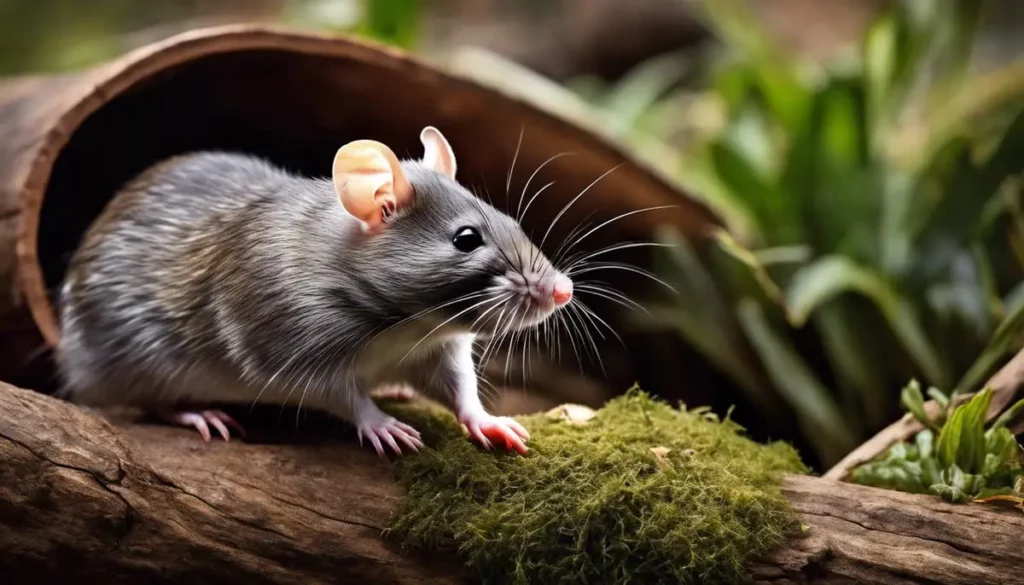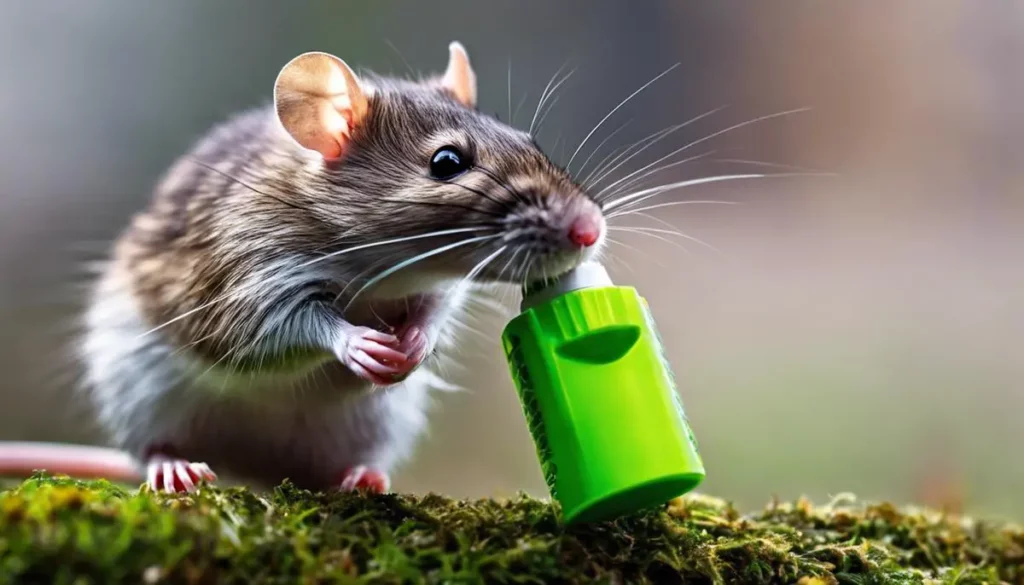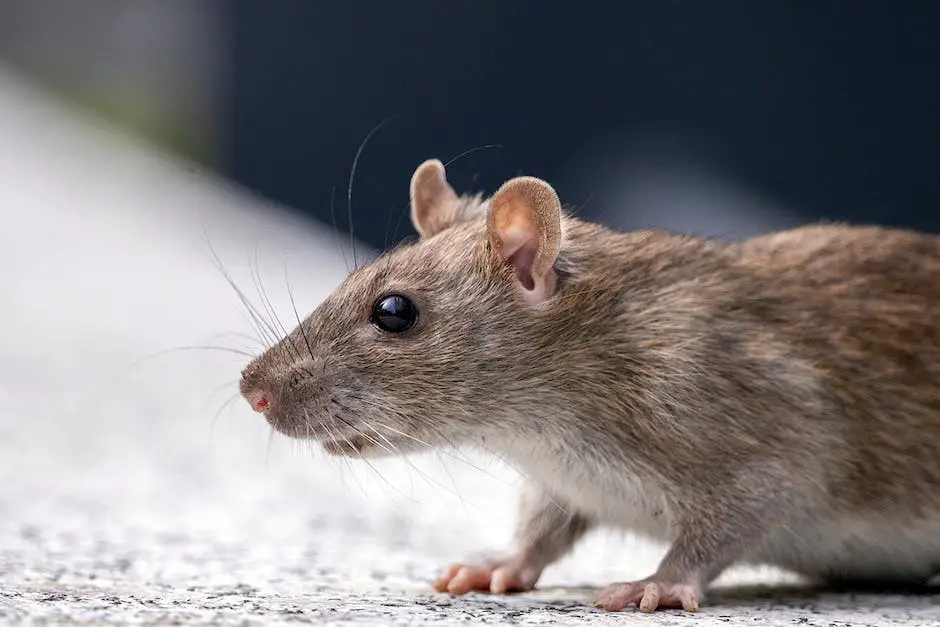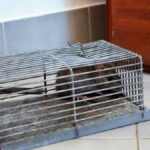Rats, often seen as formidable pests, have managed to carve out a notorious reputation for themselves due to their damaging tendencies and potential carriers of disease.
These robust rodents have become a colossal challenge to control, but understanding their behavior and knowing their feeding habits, breeding cycle, and nesting sites can play a significant role in mitigating their impact. This understanding, coupled with a comprehensive exploration of diverse repellents and traps available, can provide a robust approach to effectively manage rat infestations.
This informative guide will also delve into the preventive measures that can be adopted, such as regular cleaning, apt food storage, and frequent inspections to ensure you’re well-equipped to tackle these tenacious pests.
Understanding Rat Behavior
Wonderful Creatures, Food for Thought: The Typical Behaviors and Habits of Rats
For many, the rat may merely evoke images of a nuisance creature scurrying about in the dark corners of our human world. However, in the realm of scientific study, these creatures are admired for their complex behavioral patterns and intriguing biological processes. Their social habits, communication methods, and adaptability offer invaluable insights into the interconnectedness of life in both the fields of biology and ethology.
Rats are primarily nocturnal creatures, showing their liveliest, exploratory behaviors during the night hours. Their day times are typically spent within the confines of their burrows or nests, in a restful sleep. Photoperiods affect rat biology, influencing breeding cycles, fur growth, and overall activity levels. Thus, many of a rat’s behaviors can be interpreted or expected according to the light-dark cycles they experience.
When it comes to living structures, rats display an impressive social system, typically existing in a hierarchy within a group or a colony. The male, often referred to as the ‘dominant male’, reigns, while the females partake in the care of the offspring. They are protective of their community and often aggressive towards intruders, showing signs of stress and anxiety when unfamiliar rats are introduced to their environment.
Communication is a vital part of a rat’s life, achieved primarily through ultrasonic vocalizations, odorous secretions, and physical behaviors such as grooming, tail wagging, and boxing. They utilize ultrasonic calls for mating rituals, expressing aggression, and signaling distress. A keen sense of smell aids in recognizing the unique scent of individual rats, understanding territory limits, and even selecting mating partners.
From a survival perspective, rats exhibit remarkable adaptability. They are omnivorous by nature, capable of surviving on an eclectic diet ranging from plant matter to small invertebrates and even the food detritus of human residues. Rats have a physiology well adapted to exploit diverse habitats, from urban sprawls to rural landscapes, exhibiting phenomenal swimming abilities and dexterous climbing skills.
Yet, these nascent discoveries represent but a sliver of the rich tapestry that forms their biological and behavioral existence. Far from the often negative hues with which they are painted, rats offer a captivating study into complex social structures, unique communication methods, and impressive adaptability. Further exploration into their habits and behaviors will continue to deepen our understanding of these remarkable rodents, as well as the broader ecological and biological principles they illuminate. Overnight, our views of the humble rat must shift from vile to vital, for they give us a captivating lens to peer into and an exciting realm of knowledge to delve into, enriching our understanding of the myriad organisms that share our world. Students, academics, researchers, and the everyday reader let us find fascination and appreciation for the unique behaviors and habits of the rat. No parting summation could adequately capture the breadth of insight this distinctive creature affords us. The pursuit of knowledge, as ever, continues.

Rat Repellants and Traps
Rats, notorious as a nuisance in populated areas and consequently of scientific intrigue, have prompted the development and refinement of repellents and traps to strategically control their population. The success of these mechanisms largely relies upon a comprehensive understanding of the pertinent subject matter, coupled with its practical employment.
Rat repellents commonly leverage rats’ keen sense of smell to deter them from designated areas. Commercial sprays, usually containing ammonia or naphthalene, emit odors that are particularly repulsive to rats. Similarly, the pungent odor of peppermint oil makes it a popular organic repellent option. To effectively use these, areas of rat activity should be identified and then liberally sprayed or doused with the repellent. Repellents should be reapplied regularly to maintain their offensive potency.
Electronic repellents emit high-frequency sound waves that are irritating to rats yet inaudible to humans. Such devices should ideally be placed near entry routes or nesting areas to efficiently ward off any intruding rodents. Though these repellents entail a higher initial investment, their reusable nature may present cost efficiency in the long term.
Rats can also be deterred by physical deterrents. Steel wool, for instance, proves difficult for rats to chew through, and its bristles may cause discomfort. This can be packed into holes and crevices through which rats may gain entry into a structure.
The gravity of the rat problem will determine whether repellents are sufficient or if traps are required. Traps can be either lethal or non-lethal, and their choice hinges on a particular situation’s ethical and practical considerations.
Snap traps, a commonly used lethal option, work on a basic mechanical principle. Bait is placed on a pressure-sensitive switch that triggers the trap when disturbed, resulting in instant termination. Snap traps should be placed perpendicular to walls or other structures, with the baited end toward the wall, as rats tend to travel with their whiskers against surfaces for orientation.
Live-catch traps function differently, designed to capture rats without killing them. These traps typically employ a trip mechanism linked to a baited trigger plate. When the rat enters and disturbs the bait, it trips the mechanism, causing the door to close without harm to the rodent. Similar to snap traps, these should also be placed alongside walls or structures with the entrance adjacent to the wall.
For both trap types, it is important to identify and target areas of high rat activity. Traps should be checked regularly and dealt with promptly upon successful capture to maintain their effectiveness and limit distress caused to any captured rats.
While many may view rats as nothing more than a nuisance, their essential role in scientific studies and their complex ecological presence should never be undermined. Balancing rat population control with this appreciation for the species’ importance can lead to ethical and effective pest control strategies. Implementing these strategies with an understanding of the nuances in rat behavior can bolster success rates while ensuring minimal harm to these fascinating creatures and the ecosystems they inhabit.

Preventive Measures
Migration Control and Environmental Adjustments
To control rat populations and prevent infestations, migration control is a vital measure. Intervention at the source of rat colonies is key, such as implementing urban planning strategies that discourage rat colonies or discouraging rat migration into populated areas with the use of rat-resistant compost bins and secured trash receptacles.
Adjustments in the environment also significantly impact rat populations. Depriving them of the resources that they need for survival – mainly food, water, and shelter – can significantly reduce their numbers. Encouraging community-wide efforts in proper waste management, cleanliness, and sanitation can mitigate rat-harboring conditions.
Spatial repellents and Movement Deterrents
Rats have evolved an array of sensory apparatus utilized in interpreting their environment, including an acute sense of touch and smell. Developing repellents that affect these senses, referred to as spatial repellents, can deter rats from given areas. These can include taste deterrents and products that irritate the skin or paws upon contact.
Movement deterrents can also be highly effective. These include rat ‘proofing’ solutions, such as sealing holes and gaps at homes and buildings with cement or metal. Introducing physical barriers like rat walls or fences can also constrain rat mobility, hinder spreading, and effectively isolate colonies.
Predator Introduction
The careful introduction of predators into an environment is another biological control strategy. Predators such as owls, snakes, and certain breeds of dogs and cats have been utilized effectively to reduce rat populations. However, it is crucial to consider the balance of the ecosystem and any potential unforeseen ecological consequences when introducing new species.
Bioacoustic Disruption
Each rat band operates with a complex system of communication. Consequently, bioacoustic disruption – the use of sound to disturb these communication channels – can be a sophisticated, non-harmful prevention measure.
Population Monitoring and Routine Inspections
Since rat colonies can proliferate and mobilize swiftly, regular monitoring of populations is a crucial element of prevention. This can be achieved by routine inspections, examining signs of active infestations such as droppings, markings, or damage. Rat-tracking technology and population modeling can also contribute valuable predictive data in anticipating population trends.
In conclusion, tackling rat infestations effectively requires a multifaceted approach. It necessitates incorporating ecological and biological knowledge, coupled with innovative scientific tools and rigorous monitoring efforts. It is equally important to note that any control measures should optimally balance the needs of human populations, preservation of ecosystems, and respect for animal ethics.

Effectively managing rat infestations is a complex endeavor that demands a good understanding of rat behavior, a careful selection of traps and repellants, and vigilance in implementing preventive measures. Regular cleaning, properly sealing potential entrances like holes or gaps, and appropriate food storage are essential practices to ward off these unwelcome intruders.
Continuous inspection of one’s surroundings also cannot be understated, as it is crucial for early detection of any signs of an infestation. Armed with these insights and tools, controlling rats becomes a much more manageable task, keeping our homes safer and healthier.








